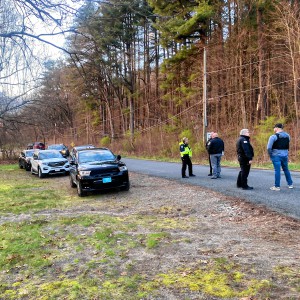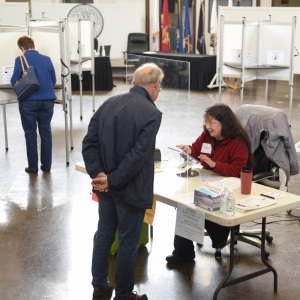Guest columnist Bob Nagle: Bipolar wanderlust
| Published: 12-13-2021 5:45 PM |
“Wanderlust, wasn’t that a movie?” Once again, that is the frequent condescending put down when I am trying to explain bipolar wanderlust, exemplifying their discordance by equivocating unconcern expressed with suspicion and ambivalence.
I compromise and defer to being circumspect as to whom I discuss it with. It is perfectly clear that bipolar is perceived as a nonexistent condition. The flippant utterance that “everybody is a little bipolar sometimes” is indicative of the prevailing ableism everywhere.
Wanderlust was a movie; however, bipolar wanderlust is most certainly not a film. It is real life for people living with bipolar disorder. Bipolar wanderlust is a result of an incurable neurobiological brain disorder that triggers a myriad of chronic cognitive and functional impairments. Wanderlust is attributed to the wanderlust gene, which recent studies have shown affects 20% of the population.
Their philosophy is life is a journey, not a place. Bipolar wanderlust may result in a desultory, peripatetic life that is comprised of unrestrainable impatience and impassiveness conjoined with insensibility, overpowering vulnerability, and guilt over abrogating responsibility.
Bipolar disorder affects 1% of the American population. Since the two wanderlusts are genetically identical and match the periodicity and restiveness as an analogous pair, let’s suppose we link them together and adapt them to a movie.
The film “Cast Away” springs to mind. The film depicts a sole passenger on an air cargo flight with a two-man crew. During the flight, in the midst of a fierce storm, they crashed into the sea. The crew perished. After a turbulent night, he drifted and discovered he was all alone, fraught with perils on a godforsaken island. The castaway was devastated over his dire circumstance, succumbed to fatalism, and attempted to commit suicide. The rope broke and he lived.
Bipolar is a neurological string that snaps quickly. It is akin to lying flat on your back tethered to a hospital bed, preoccupied by self-scrutiny and uncertainty, reliant on a call bell for help. The support is contingent on stringent adherence to medication to get discharged.
Sadly, the suicide rate for bipolar is 20 times higher than that of the general public. Accordingly, studies have shown that those living with bipolar are predisposed to die anywhere between 10-25 years younger than the average life expectancy.
Article continues after...
Yesterday's Most Read Articles
 Locking up carbon for good: Easthampton inventor’s CO2 removal system turns biomass into biochar
Locking up carbon for good: Easthampton inventor’s CO2 removal system turns biomass into biochar
 Northampton man will go to trial on first-degree murder charge after plea agreement talks break down
Northampton man will go to trial on first-degree murder charge after plea agreement talks break down
 Police report details grisly crime scene in Greenfield
Police report details grisly crime scene in Greenfield
 Area property deed transfers, April 25
Area property deed transfers, April 25
 Advancing water treatment: UMass startup Elateq Inc. wins state grant to deploy new technology
Advancing water treatment: UMass startup Elateq Inc. wins state grant to deploy new technology
 Super defers Amherst middle school principal pick to successor; one finalist says decision is retaliation for lawsuit
Super defers Amherst middle school principal pick to successor; one finalist says decision is retaliation for lawsuit
The able-minded rejection of bipolar is abundantly clear with the perpetual use of the trope “crazy,” consistent with the abasement of the able-minded. When the invective crazy is aimed at an individual with mental dysfunction, it has a negative connotation and is emotionally burdensome.
Our republic unequivocally concurs with the general population’s assessment, unjustly surmising that the bipolar disability federal benefit rate shall be $794 a month, dispersed via Supplemental Security Income. The unmistakable assertion is that we are categorized as “less than.” For those of us living with bipolar disorder, there are labyrinthine impediments hindering our comeback, typified by arduous travails, overpowering discrimination and inconsideration by the able-minded.
Yet, we prevail despite undergoing lifelong cardiovascular problems such as atrial fibrillation. The straightforward facts are when a spouse is bipolar the divorce rate is 90%. Regardless of the situation, we all have the capacity to find a path back. Although we cope with formidable obstacles daily, we admirably press on with stalwart determination.
The resolve of the castaway was enhanced by the realization that the human connection to the exclusion of nothing else is the sole reason to live. Inspired, he built a raft and got back, reawakened to life’s spectacular wonderment. In spite of ever-present ableism, we are in control of our life’s journey.
We are more than. I came back after 60 years of lugubriousness. I experienced a pivotal incident that affirmed my anosognosia. From that point on, the words of Buddha have been a guiding light, “The purpose of life is to find your purpose.”
My sole purpose is to edify the public on bipolar disorder and the devastation it causes. The able-minded deem us all as less than, but they don’t know who we are. “Crazy” is not who we are. We empower that word to defeat the omnipresent ableism in modern society. That is our way back to the community, our raft back to civilization.
I propose a purpose: besmirch narrowmindedness and cynicism and increase awareness, thoughtfulness, and basic humanity toward those with bipolar disorder. We all do matter and can accomplish anything we desire with courageousness, resourcefulness, and self-dependence. We can all come back. There is no rainbow until the rain. “Not all that wander are lost.” — J.R.R Tolkien.
Bob Nagle is a 60-year resident of Northampton, bringing visibility to those living with bipolar and mental health stigmatization in the community.
 Charlene Galenski: Blake Gilmore, a strong candidate for Deerfield’s Selectboard
Charlene Galenski: Blake Gilmore, a strong candidate for Deerfield’s Selectboard Annette Pfannebecker: Vote yes for Shores Ness and for Deerfield
Annette Pfannebecker: Vote yes for Shores Ness and for Deerfield Columnist Susan Wozniak: Rising costs long ago swamped hippie ideal
Columnist Susan Wozniak: Rising costs long ago swamped hippie ideal Guest columnist Rudy Perkins: Dangerous resolution pins ‘aggression’ on Iran
Guest columnist Rudy Perkins: Dangerous resolution pins ‘aggression’ on Iran
